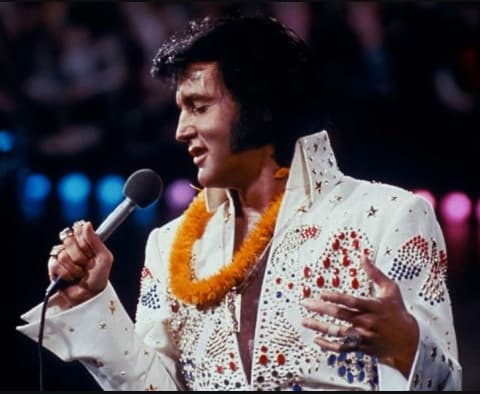
The King’s enduring anthem of defiance and cool
For those of us who came of age in the 1950s, the phrase “Blue Suede Shoes” isn’t just a song title; it’s a cultural touchstone. It’s the sound of rebellion, of youth finding its voice, and of the unbridled cool that was rock and roll. While the song was originally written and recorded by the great Carl Perkins, it was Elvis Presley who cemented its place in music history. His 1956 studio version, a B-side to “Tutti Frutti”, became a hit in its own right, reaching a respectable No. 20 on the Billboard Top 100. However, it was his live performances, filled with raw energy and magnetic charisma, that truly made the song his own.
The story behind the song is one of shared inspiration and a touch of serendipity. Carl Perkins got the idea after seeing a guy at a high school dance get agitated when a girl accidentally scuffed his new shoes. Perkins, a blues and country musician at the time, saw the humor and the truth in the moment: in a world where you had nothing, a pair of “Blue Suede Shoes” could be everything. They represented status, style, and a sense of self-worth. It was this simple, relatable message that resonated with a generation eager to express itself.
But when Elvis took the stage for his Aloha From Hawaii concert on January 14, 1973, “Blue Suede Shoes” took on a new layer of meaning. By this time, the song was nearly two decades old, and Elvis himself was no longer the skinny, hip-swiveling kid from Tupelo. He was a global icon, a legend living in the spotlight’s glare. The concert, broadcast live via satellite to an audience of over 1.5 billion people, was a testament to his enduring power. When he launched into “Blue Suede Shoes,” it wasn’t just a song; it was a defiant statement. It was Elvis reminding everyone—and perhaps himself—that beneath the capes and the Vegas theatrics, the rebellious spirit of rock and roll was still very much alive. The moment was tinged with nostalgia, a looking back at the youthful exuberance that had changed the world.
For a generation that had grown up with Elvis, the performance was a powerful trip down memory lane. We remembered the first time we heard the song, the way our parents shook their heads in disapproval, and the thrill of being part of something new and exciting. The song, in a way, became a symbol of our own journey, from the innocence of youth to the complexities of adulthood. It’s a reminder that no matter how much time passes, some things—the power of a great song, the feeling of freedom, and the memory of a pair of “Blue Suede Shoes”—never fade away. It’s an anthem that, when we hear it today, still sends a shiver of recognition down our spines, a feeling that takes us right back to the beginning. The Aloha From Hawaii version, with its grander arrangement and the roar of the crowd, encapsulates the king’s legacy: a larger-than-life figure who, at his core, was still a rock and roll rebel with a message as simple and powerful as ever. It wasn’t just a live album; it was a cultural event, with the album “Aloha from Hawaii Via Satellite” topping the Billboard charts. The concert was a pivotal moment, marking Elvis’s return to the global stage and solidifying his status as the undisputed king of rock and roll. When he sang, “But don’t you step on my blue suede shoes,” it felt like he was singing for all of us, a call to protect the things that matter most, be it our dignity, our identity, or our memories.